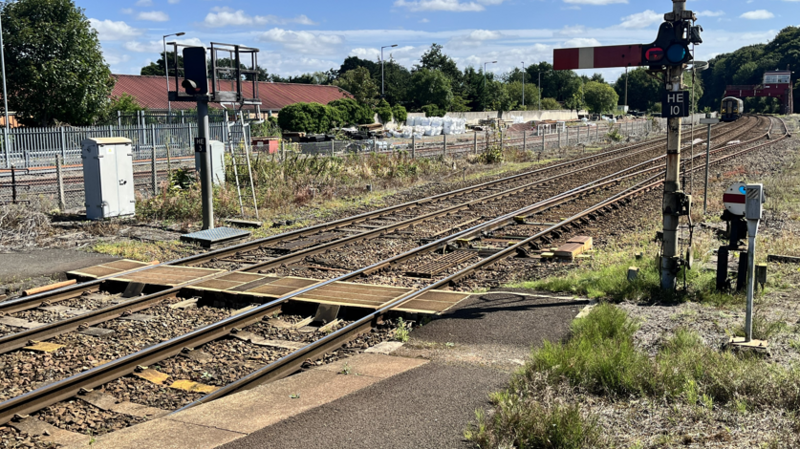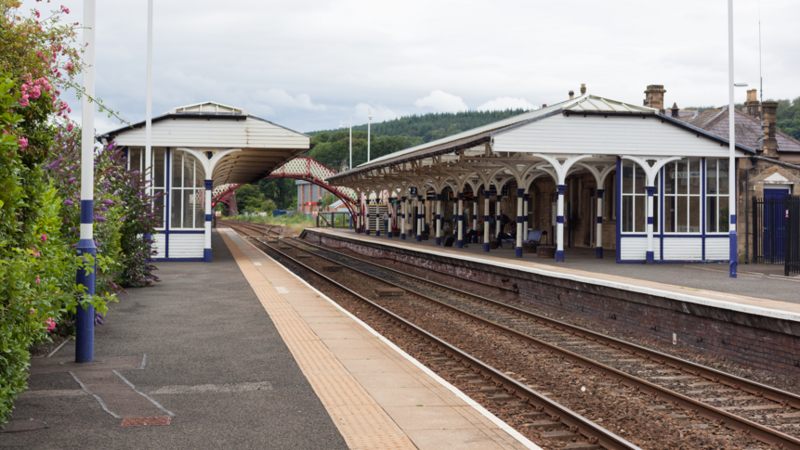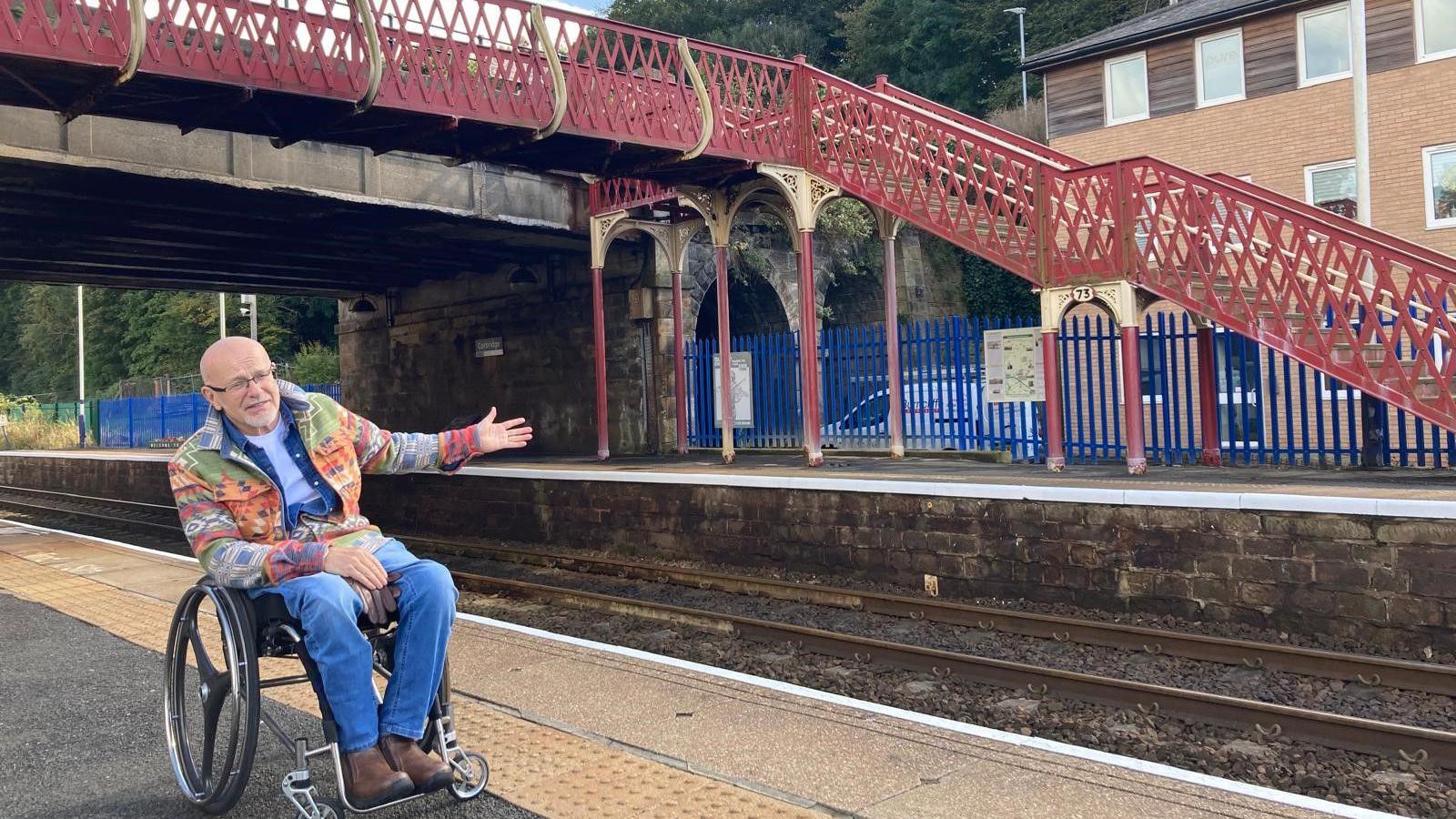Station's accessibility praised but 'lift needed'

Hexham station has a barrow crossing which can only be used when staff are available
- Published
Campaigners have praised a train operator after it improved accessibility at one of England's oldest stations, but said there was still a long way to go.
Hexham's step-free route to the westbound platform can only be used if staff are available to supervise.
Northern confirmed staff would be there from the first to the last train of the day and it was "working hard" to make sure that travelling by train was "accessible for everybody".
Patrick Rice, chair of the Tyne Valley Rail Users' Group, called the change a good "stop-gap measure" but the Northumberland station, which is Grade II listed, would only been fully accessible when a lift was installed.
Mr Rice said the barrow crossing across the tracks "affords better access from one side to the other" as the walking route around the station was "absolutely diabolical".
Staff are required to use the crossing, however, to block the signals and make sure no trains are due.

There is no lift at the Grade II listed Hexham station, one of the oldest in England
"We will take the view, however, that it is a stop-gap measure because even with this it doesn't afford independent travel," Mr Rice said.
"It's great that it can be done but the whole idea is accessible travel should be a right, not a privilege and it should be something that the user can do independently wherever possible, not having to seek the access."
Passengers on the ticket office side need to ask the on-duty member of staff to use the crossing, while those on the other platform need to use the bell on the wall to ask for assistance.
A spokesperson for Northern said: "Having colleagues available to help from the first train to the last train means we can offer consistent support to customers who need help getting across the foot crossing or accessing services.
"This change is part of our wider efforts to improve the experience for all customers."
Follow BBC North East on X, external, Facebook, external, Nextdoor and Instagram, external.
Get in touch
Do you have a story suggestion for BBC Tyne?
Related topics
- Published26 September 2024
